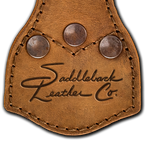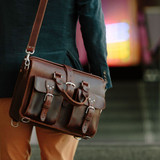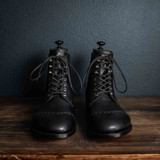10 Causes Of A Weak Arch
The Root Cause Of Almost All Foot, Knee, Hip and Back Pain
The root cause of almost all pain from the toes up to the lower back is shoes that make your arch weak. A weak arch makes the foot lean which misalignes the bones from the foot to the ankle, then to the knee then to the hip then to the lower back. And that causes all of the ligaments, tendons and muscles connected to those bones get either lazy and atrophe or work too hard and get tight. There are 8 design features in shoes that cause a weak arch and 2 that we cause. There are more than 10 solutions to make the arch strong again.
The 8 Characteristics of a healthy shoe that don’t weaken the arch and 2 that we can do:
-
A straight inner line to keep the big toe straight
-
A wide toe box for the foot to spread out
-
A long enough shoe
-
A low or no heelstack
-
A low toe spring
-
No arch support from below
-
Plenty of toe flex
-
No padding
-
Not too much bodyweight
-
Exercise the foot by walking
Cause 1: Big Toe Pushed to the Side
The most common cause is because the big toe gets pushed in toward the middle toes in shoes that are too narrow. That pulls, stretches and over-extends the muscles, tendons and ligaments of the toe and arch for hours each day. That makes them weak like how the elastic in socks gets weak over a long period of time if it stays stretched out.
Solution: The toe bones need to stay in the natural straight line with the foot bones, so wear shoes that have a straight inner line from the heel to the tip of the toe before it curves.
Cause 2: Narrow Toe Box
Normal people take about 8000 steps each day. People who walk around town a lot take about 20,000 steps each day. That means we put all of our weight down on one foot between 4000 to 10,000 times per day. When we press all of our weight down on that one foot, the foot bones spread apart, in some people up to half an inch. But if the foot bones don’t have space to widen out, it weakens the arch.
Solution: Look for a shoe that advertises a wide toe box or go one letter or a half letter up in width. You can go wider than you need, but not narrower.
Cause 3: Shoes Too Short
When we press all of our weight down on one foot when we step, the arch naturally flattens and extends to absorb the shock and then contracts back to the arch form again. When the foot extends in length, in some people, it extends up to half an inch. But if the toes hit the tip of the inside of the shoe 8,000 times a day, it hurts the big toe and therefore hurts the arch that is connected to it. Most people wear shoes that are too short.
Solution: It is fine to wear shoes a half size up, especially if you are on your feet all day, because our feet flatten and therefore lengthen up to half an inch longer by the end of a long day.
Cause 4: Heelstack Too High
The heel was designed to support most of the body’s weight and the rest of the foot is there mainly for balance. If the heel stack is too high, then that shifts the weight forward from mainly over heel to add more weight on the arch. The arch was not designed to support much weight and so it smashes the arch down to the ground and weakens it over time.
Solution: Try not to wear shoes that have more than ¾” of height to the heel. Have a shoe repairman to replace the heel of your favorite shoes to be lower.
Cause 5: High Toe Spring
When the tip of the shoe is low to the ground, that is natural. When it is curved up too high, that is not natural and it keeps the toes in an over-extended state all day long and so over-stretches the tendons, ligaments and muscles connected to the arch and makes the arch weak.
Solution: If you have some and love them, then don’t wear them for too many hours or days consecutively. I don’t think there’s anything you can do to lower the toe spring.
Cause 6: Support Under The Arch
The arch is there to absorb shocks when we step. When there is no weight on it, the arch muscles contract and relax and then when we step down on it, extends to full length. Then we lift the foot to take another step and the arch muscles, tendons and ligaments naturally contract back up to a relaxed state again. And so the arch exercises all day long when we take steps and so it keeps itself strong. When the arch is fixed in one place and not allowed to exercise by extending and contracting, the muscles atrophy and get weak from lack of exercise and motion, just like how arm muscles gets weak and skinny when in a cast or the legs get weak and skinny in a wheelchair from lack of movement. Arch support is like a crutch and is meant to prop up a weak flat arch to put the bones, muscles, tendons and ligaments back into alignment, which puts the whole body back into alignment. But that support makes everything weaker from inactivity.
Solution: Better to strengthen the arch by going barefoot or by wearing good shoes that let the arch expand and contract than to make the arch sit in a wheelchair for the rest of their lives. Barefoot cultures don’t have problems with weak arches and they have zero arch support too.
Cause 7: Padding
Harvard professors and many other medical professionals say padding in shoes is bad for you for three reasons.
First, you know how when a karate guy chops a board in half with his hand? He can do it because he has been striking things over and over again and so has increased his bone and muscle density. A boxer can punch super hard because his wrists and bones are strong and dense from hitting a punching bag over and over again. You weaken the muscles and lessen bone density when you use padding in your shoes. Padding was rarely used in shoes before the 1970’s. Barefoot cultures obviously don’t use it either.
Secondly, padding is bad because it distributes the bodyweight so the whole foot supports it evenly, including the delicate arch that isn’t designed to support much weight for prolonged periods. It’s kind of like when you sit down on a wide wooden bench versus sitting on a narrow 2x4. The weight is distributed across a large area, but on the narrow board, the weight is concentrated in one area. The heel and outer edge of the foot were designed to support the bulk of the bodyweight, but the arch and ball of the foot were not.
Thirdly, i've seen the math and scientists say padding actually increases the impact of every step on our knees and other joints.
Solution: Go barefoot whenever you can. Look for shoes with little or no padding like all high end bespoke shoes and cowboy boots are made. Look for barefoot shoes. Wear thick socks if you have to if your feet are too weak.
Cause 8: Little or No Toe Flex
If the sole of the shoe is too stiff, then the toes aren’t allowed to flex and exercise much. The mechanics of a step are this. You step down on the outer side of the heel and as you move forward, the bodyweight goes from being supported by the heel to being supported by the outer side of the foot. As you keep leaning forward and raise your heel, the ankle rolls (pronates) a little toward the inside big toe side of the foot and when the bodyweight is in just the right spot, the toes push down into the ground and propel the body forward. The sole of the shoe needs to be flexible at the toes so they can flex and bend and push off or else they don’t get exercise and so get lazy and weak.
Solution: Don’t wear stiff shoes for long periods of time or for consecutive days. Now and then is fine though. Do toe and foot exercises.
Cause 9: Too Much Weight
If a person is too fat or is constantly carrying a lot of extra weight, then that presses down the arch and keeps it extended too much of the time and doesn’t let the arch get back into its contracted resting position. That’s why standing is more tiresome than walking. It’s like keeping a bungy cord or rubber band fully stretched out for a year. When you finally let it relax, it’s weaker and not as elastic as it was before.
Solution:
Stop eating or live off the land in the Yukon until the weight is gone. Tapeworms, Vomiting after meals and Dengue fever also help with weight loss, but some would object.
OR
Only eat portions that are the size of your fist, which is the size of your stomach, for each meal, at least 3 hours apart, but eat anything you want. Do it 5 days a week and pig out for 2. Don’t eat after 6 pm and before 7 am. Get a friend to hold you accountable so for 5 days a week. Pay them $20 if you don’t do it 5 days a week. But you can miss as many days as you need, but only if you call them to ask permission because of something unavoidable.
Cause 10: Not Enough Walking
It’s not enough to go to a gym and just hang out or to coast on a bicycle down the mountain on a 15 mile long downhill road. You have to use your muscles if you want to keep them strong. In the same way, it’s not enough to just put good shoes on your feet. You have to walk in them so your feet get the chance to push back and flex and resist the pressure and stress of your bodyweight so they stay strong. Even if they have all of the characteristics of a good shoe, which are: a wide toe box, a straight inner line to keep the big toe straight, they are long enough, have a low heel, don’t have too much toe spring, have no arch support, have no or minimal padding and they let the toes and foot muscles flex and move, but you don’t walk in them, then your arch will get weak and your feet will lean in toward the middle and your body will get out of alignment.
Solution: Get a friend to hold you accountable so you’ll go on a walk 5 days a week. Pay them $20 if you don’t go out 5 days a week. But you can skip an extra day if you call them to ask because of something unavoidable. Commit to at least going around the block 5 days a week. You’ll go further, but the hardest part is just to start.
Biomechanical Characteristics
But it wasn’t just the anatomical last that mattered. He was concerned with the interconnected movement (biomechanics) of the feet, ankles, knees, hips and lower back that he had learned about at Yale School of Medicine. He knew the muscles, tendons and ligaments couldn’t be pushed or stretched out of their natural locations and they needed to stay strong by exercising and functioning, like they naturally do when we walk barefoot, and the toe bones needed to stay in perfect alignment with the foot bones.
Dr. Munson wrote,
“It is quite apparent from the foregoing that the foot is not at all the rigid structure popularly supposed, to be carelessly jammed into any sort of container, irrespective of the size, shape, and character of the latter. On the contrary, it is seen to be a highly developed member of complex formation and intricate function, every factor of which needs thoughtful consideration in determining its proper covering.”
So, Dr. Munson built a biomechanically correct shoe around the anatomically correct Munson last by incorporating the 8 key elements the Shoe Board confirmed make an orthopedically sound shoe. He documented these in his book, which, everytime I read it, I feel like I am reading the work of my long lost brother.
This new boot was so incredible that the U.S. military used it from 1912 to about 1970 because it gave them such an advantage in war. Every war movie or photo of a U.S. soldier you see from those years is wearing a Munson boot. He notes, “The army which marches best, other things being equal, is the successful army. Mobility is the key of military success…” The mililtary genius, Colonel Forrest, defined the art of war as "getting there first with the most men". A little known fact, during WWII, the Germans sent spies into England to try to steal their military’s last, which was based on the principles of the Munson last and shoe.









